Disclosure: This article contains affiliate links. We may earn a commission from purchases at no extra cost to you, which helps our travel content.
Standing on Queen Street in Speightstown, the juxtaposition is impossible to miss—centuries-old colonial architecture backdropped by the impossibly blue Caribbean Sea. While Bridgetown attracts the cruise ships and Holetown caters to luxury seekers, Speightstown remains Barbados' most authentic urban experience. During my recent business trip to assess trade logistics in the Caribbean, I carved out a weekend to explore this overlooked colonial settlement—what locals affectionately call 'Little Bristol'—and discovered a refreshingly unpretentious window into Barbadian heritage that most travelers miss entirely.
Navigating Speightstown's Colonial Grid
Unlike the carefully manicured tourist zones elsewhere on the island, Speightstown presents its history raw and unfiltered. The town follows a simple grid layout established in the 1630s when it served as Barbados' busiest port. Start your exploration at the Speightstown Esplanade, where I recommend beginning early morning with the insulated water bottle I never travel without—the purification system proved invaluable in the tropical heat while reducing plastic waste.
The architectural highlights reveal themselves organically as you wander the grid. Along Queen Street and Church Street, centuries-old merchants' homes display the distinctive Barbadian vernacular style—coral stone foundations, wooden upper floors, and steep gabled roofs designed for tropical downpours. Arlington House Museum, housed in a restored 18th-century building, offers the most comprehensive introduction to the town's commercial history through interactive exhibits that effectively contextualize the surrounding architecture.
What fascinates me most about Speightstown is how it represents an unbroken link in global trade networks established nearly four centuries ago. The same streets that once facilitated sugar exports now host small businesses engaged in modern commerce, demonstrating how urban spaces evolve while maintaining their fundamental functions.

💡 Pro Tips
- Start your walking tour before 10 AM to avoid the midday heat
- The town grid is compact and walkable in 2-3 hours at a leisurely pace
- Look for the blue Barbados National Trust plaques that identify buildings of historical significance
Arlington House: Technological Window to Colonial Life
As someone who tracks how technology transforms urban spaces, I found Arlington House Museum unexpectedly compelling. This three-story townhouse has been brilliantly retrofitted with interactive exhibits while preserving its 18th-century character. The museum employs touchscreens and motion-activated displays to illustrate Speightstown's evolution from indigenous settlement to colonial trading post to modern community.
The museum's second floor recreates a merchant's office with digital overlays that bring ledgers and shipping documents to life—a masterful integration of historical artifacts with contemporary interpretation techniques. I spent nearly two hours exploring the exhibits, capturing details with my smartphone gimbal for stable video despite the dimly lit interiors. This compact stabilizer has become essential for my urban documentation projects, allowing for smooth panning shots that capture architectural details without disturbing other visitors.
What makes Arlington House particularly valuable is how it contextualizes Speightstown's urban development within broader Caribbean trade networks. The exhibits don't shy away from addressing the brutal reality of the plantation economy while highlighting the town's importance as a commercial hub that connected Barbados to global markets.

💡 Pro Tips
- Allow at least 90 minutes to fully appreciate all three floors of exhibits
- Visit on weekday mornings when cruise ship crowds are minimal
- The knowledgeable staff can provide additional context if you express specific interests
Local Culinary Mapping Exercise
Understanding a city's layout often means mapping its culinary offerings—something I've done in urban centers from Singapore to Helsinki. In Speightstown, this exercise yielded remarkable insights into how the town's colonial grid has evolved to serve contemporary needs while maintaining historical continuity.
The Fisherman's Pub on Queen Street represents the authentic endpoint of Barbados' seafood supply chain. Unlike the curated experiences in tourist zones, here you'll find zero pretension—just the day's catch prepared according to generations-old recipes. The grilled mahi-mahi with rice and peas became my benchmark for evaluating all subsequent meals on the island.
For a more elevated experience that still honors local culinary traditions, Island Plates offers innovative interpretations of Bajan classics. Their flying fish with cou-cou (cornmeal and okra) demonstrates how traditional recipes can be refined without sacrificing authenticity. During my visit, I used my pocket translator to discuss cooking techniques with the chef—this device has repeatedly proven invaluable for deepening cultural exchanges beyond tourist pleasantries.
Perhaps most telling about Speightstown's authentic character is the Saturday morning market, where local producers sell provisions directly to residents—a commercial practice that has continued uninterrupted for centuries in virtually the same location.
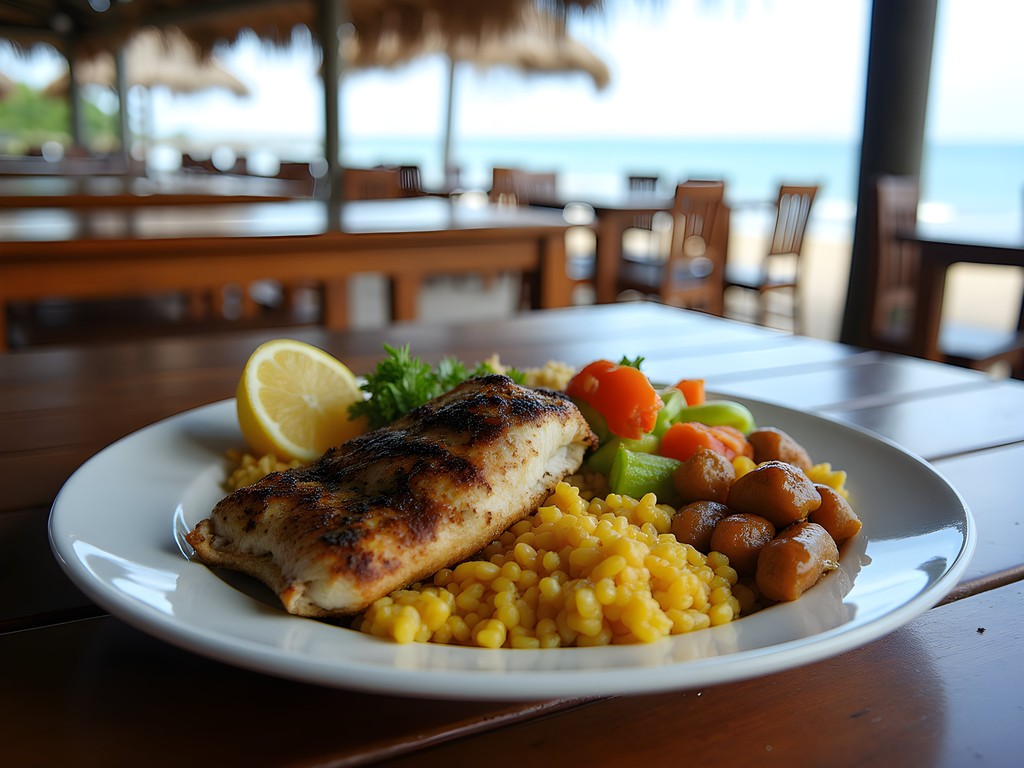
💡 Pro Tips
- The Fisherman's Pub serves the most authentic local lunch at remarkably reasonable prices
- Island Plates requires reservations for dinner service during high season
- Visit the Saturday morning market before 9 AM for the best selection of local produce
St. Peter's Parish Church: Architectural Cornerstone
Any analysis of Speightstown's urban development must include St. Peter's Parish Church, which has anchored the community since the 1630s. While the current structure dates primarily to the 1800s (following hurricane damage to earlier iterations), it represents the continuity of Speightstown's social and spiritual infrastructure across centuries.
The church's architecture reflects Barbados' colonial history—Gothic Revival elements imported from England adapted to tropical conditions. Inside, memorial tablets chronicle the island's complex social hierarchy, with elaborate monuments to plantation owners contrasting with simpler acknowledgments of other community members.
What struck me most was how the church grounds function as a physical timeline of Speightstown's development. The cemetery contains graves spanning nearly four centuries, with weathered headstones bearing inscriptions that document the town's demographic evolution. For those interested in architectural photography, I recommend the polarizing filter that has become essential for my documentation work. It dramatically reduces glare on the church's whitewashed walls while enhancing the rich blue Barbadian sky, allowing for architectural details to be captured with precision even in harsh tropical light.
St. Peter's position at the southern edge of the original town grid illustrates classic colonial urban planning principles, where religious institutions were strategically placed to establish social order within new settlements.
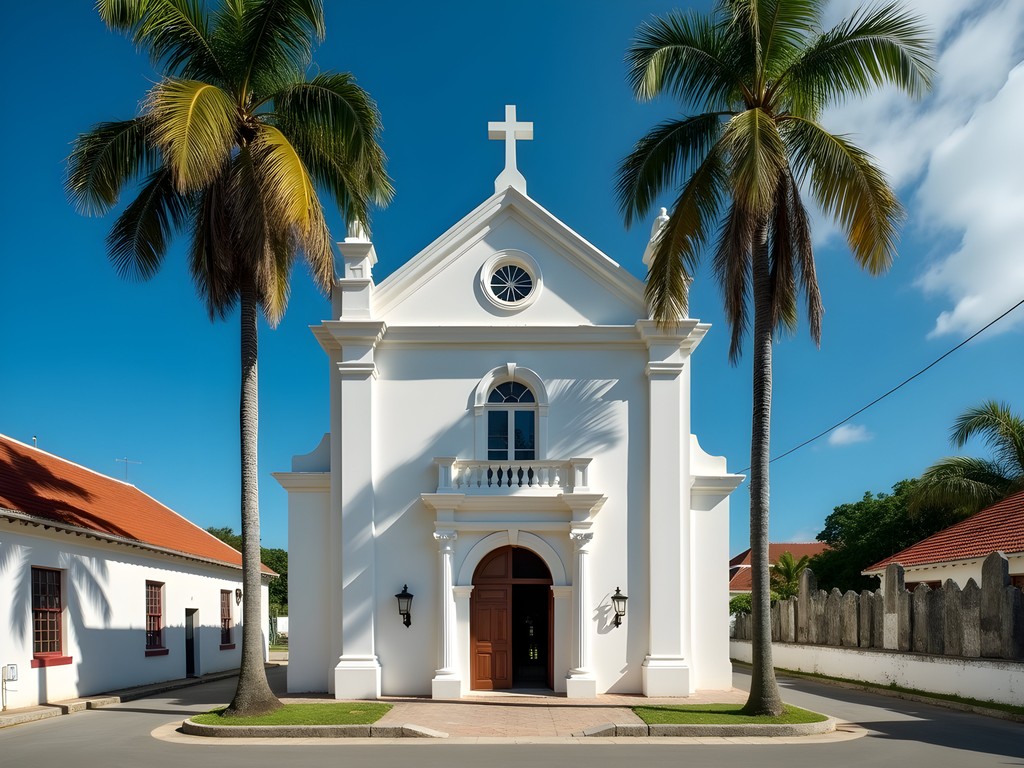
💡 Pro Tips
- Visit outside of service hours (typically 9-11 AM on Sundays) for uninterrupted architectural exploration
- The cemetery contains fascinating historical inscriptions worth examining
- Ask permission before photographing the interior, though it's generally permitted
The Forgotten Waterfront
Perhaps the most revealing aspect of Speightstown's urban layout is its waterfront—once the economic engine of northern Barbados but now a quiet reminder of historical trade patterns. Unlike Bridgetown's heavily developed port infrastructure, Speightstown's seafront retains a refreshing authenticity that reveals its commercial evolution.
The modest jetty where small fishing boats now dock once accommodated merchant vessels trading sugar, rum, and enslaved people between the Caribbean and Europe. Today's waterfront promenade offers an unfiltered perspective on how global trade networks have reshaped themselves over centuries, with container shipping having largely bypassed this once-bustling port.
For sunset viewing along the esplanade, I relied on my packable beach blanket—an ingenious solution that compresses to pocket size yet provides ample sitting space on sea walls or sand. This ultralight blanket has accompanied me from urban parks in Tokyo to remote beaches in the Maldives, proving its versatility across diverse environments.
The juxtaposition of historic warehouses (some repurposed, others abandoned) against the Caribbean horizon creates a compelling visual narrative about economic transition. Several buildings along the waterfront feature architectural elements specifically designed for efficient cargo transfer—reminders of Speightstown's former commercial prominence now adapted to contemporary functions.
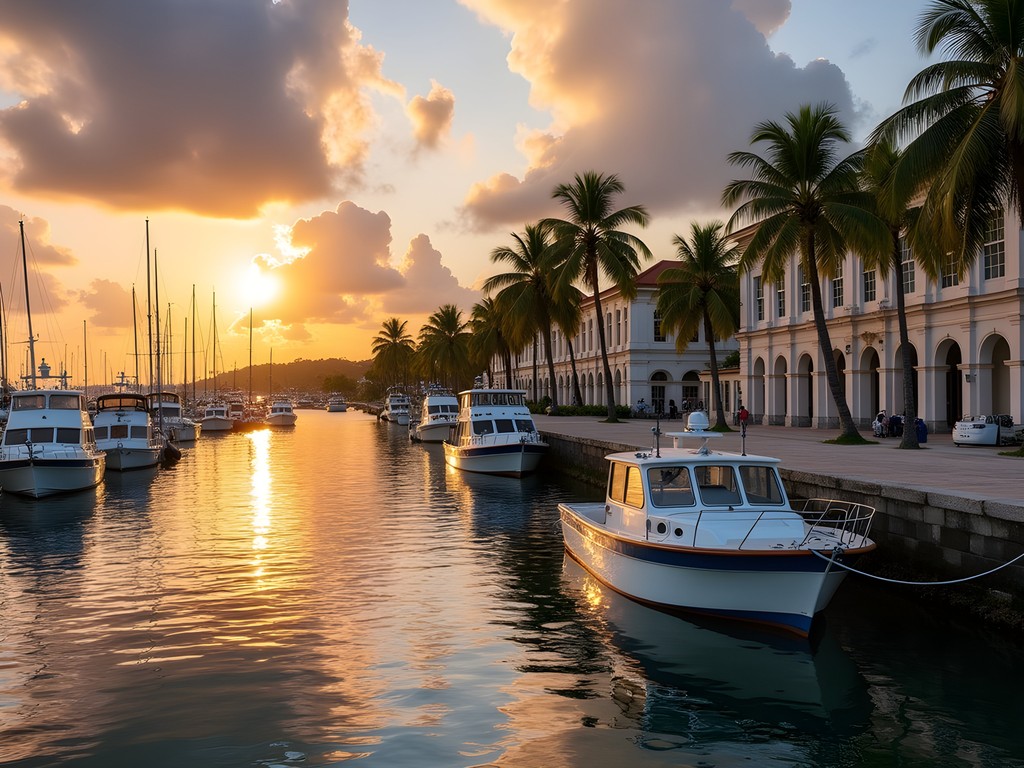
💡 Pro Tips
- The waterfront is most photogenic during the golden hour before sunset
- Several benches along the esplanade provide perfect vantage points for watching fishing boats return
- The northern end of the waterfront offers the best perspective of how the town meets the Caribbean Sea
Final Thoughts
Speightstown represents something increasingly rare in our hyper-connected world—an authentic urban environment that hasn't been excessively curated for tourism. As someone who documents urban evolution across global tech hubs, I found profound value in this modest colonial settlement that wears its history honestly. The town offers a refreshing counterpoint to the manufactured experiences that dominate modern travel, allowing visitors to observe genuine community life unfolding against a backdrop of remarkable historical continuity.
What makes Speightstown worth your time isn't flashy attractions or luxury amenities, but rather the opportunity to witness an authentic Caribbean town functioning much as it has for centuries. The architectural heritage, culinary traditions, and community rhythms provide a window into Barbados beyond the resort bubble. For couples seeking meaningful shared experiences rather than Instagram moments, this walkable colonial grid rewards curious explorers with insights impossible to gain from more polished destinations. I encourage you to add this overlooked gem to your Barbados itinerary—even if just for a day trip—to experience the island's most genuine urban expression.
✨ Key Takeaways
- Speightstown offers the most authentic colonial urban experience in Barbados
- The compact historical grid can be thoroughly explored in a single day
- Arlington House Museum provides essential context for understanding the town's development
- Local culinary establishments serve genuine Bajan cuisine at reasonable prices
📋 Practical Information
Best Time to Visit
year-round, though January-April offers optimal weather
Budget Estimate
$50-100 per day including meals and museum admission
Recommended Duration
One full day or a relaxed weekend
Difficulty Level
Easy


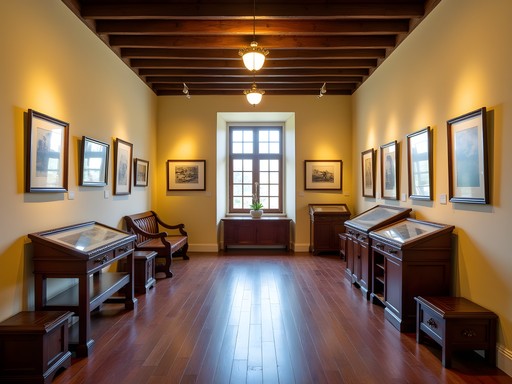
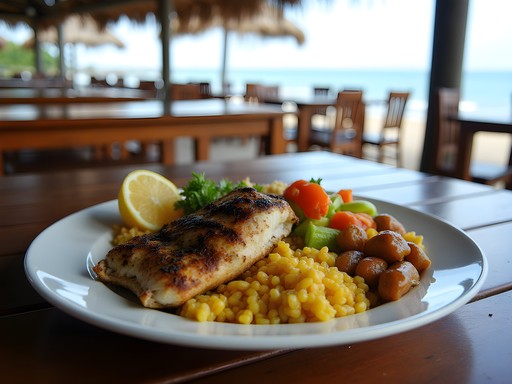
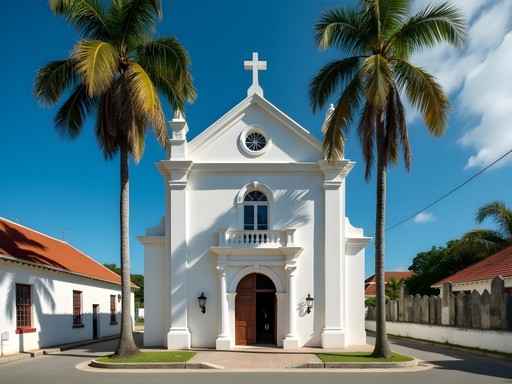
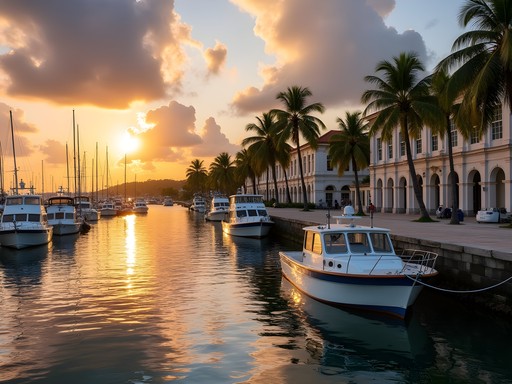



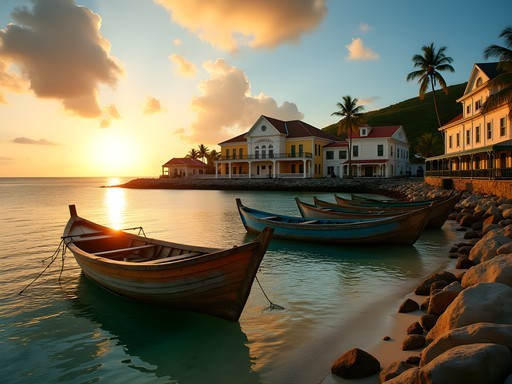
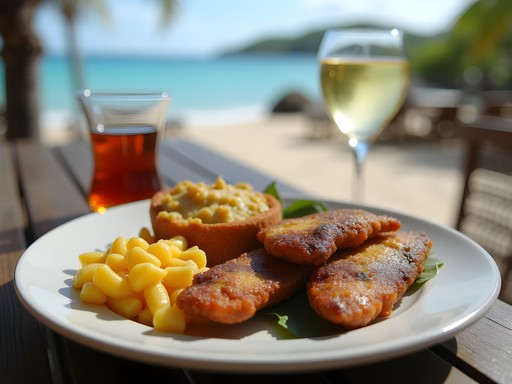
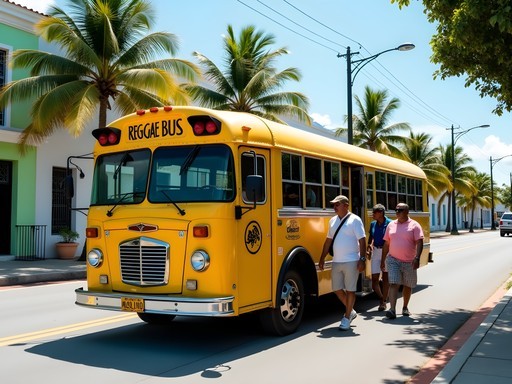




Comments
redhero
Is St. Peter's Parish Church open to visitors every day? Planning a trip for January and wondering if I need to time my visit for a specific day.
wildfan
I was there in February - it's open most weekdays from 9-3 but closed during services on Sunday morning. The caretaker gave us an amazing impromptu tour!
redhero
Thanks for the info! That's super helpful.
wildlover498
We did the public transportation too and it was great! Those ZR vans Frank mentioned are an experience themselves. The drivers play the BEST soca music and it's such a fun way to travel with locals. St. Peter's Parish Church was stunning - make sure you go inside if you can.
Frank Garcia
Haha yes! Those ZR vans are like mobile parties. Did yours have all the custom LED lights inside too?
wildlover498
Yes! Purple and blue lights and speakers that could wake the dead! 😂 Best $3.50 entertainment ever!
travelguide
Just booked my trip to Barbados and this is exactly what I was looking for! Can't wait to explore Speightstown instead of just the typical tourist spots. Thanks Dylan!
George Hayes
We did this walking tour with our kids (8 and 10) last week and it was surprisingly engaging for them! The Arlington House Museum's interactive elements were perfect for keeping them interested in the history. My tip for families: bring your own water bottles as options are limited along the route. We stopped at PRC Bakery for their amazing coconut bread - absolute must-try! The kids also loved watching the fishing boats come in near the Fisherman's Pub. We used this guidebook which had some great additional historical context about the buildings. Dylan - your culinary mapping exercise was brilliant - we turned it into a scavenger hunt for local fruits and the kids were thrilled!
travelguide
Thanks for the PRC Bakery tip! Adding that to my list for when I visit in November!
sunnyphotographer475
Love the photos! What camera settings would you recommend for capturing those colonial buildings against the bright Caribbean sky? Always struggle with the contrast when I'm in places like this.
Dylan Turner
Thanks! I typically shoot in aperture priority with -0.7 exposure compensation to preserve sky details, then bring up shadows in post. HDR can work too but sometimes looks unnatural. Early morning light (around 7-8am) gives the best results on those colorful facades!
Frank Garcia
Just got back from Speightstown last month and can confirm this is spot on. What I found fascinating was how different it feels from Bridgetown - much less touristy and more authentic. The colonial architecture is incredibly well preserved without feeling like a museum. I'd add that the local buses (the blue ZR vans) are a great way to get there from Bridgetown or Holetown if you're staying elsewhere. Only $3.50 BBD and quite the cultural experience! Arlington House was definitely the highlight - the interactive exhibits give you a real sense of colonial life without sugar-coating the darker aspects of that history.
wildone
Great post! How long should I plan for this walking tour if I want to take it slow and really soak in the architecture?
Dylan Turner
Thanks for asking! I'd recommend at least 3-4 hours if you want to really take your time, especially if you plan to visit Arlington House Museum and stop for lunch. Morning is best before it gets too hot!
wildone
Perfect, thanks! Will plan for a morning visit then.
globelegend
We did the public transportation too and it was great! Those minibuses are an experience themselves lol
Charlotte Watkins
Weren't they just! My husband was white-knuckling it the whole ride while our teenage grandkids thought it was better than any theme park ride. The reggae blasting made it even more memorable!
John Hart
Fascinating contrast between Speightstown and Bridgetown. I visited both last year and found Speightstown's preservation of colonial architecture remarkably intact compared to many Caribbean settlements I've documented. The absence of cruise ship crowds creates a noticeably different atmosphere. One observation: the town's grid layout reflects typical British colonial urban planning, but with interesting adaptations to the topography and climate that differ from similar settlements in former British colonies in Asia. For serious photographers, I'd suggest arriving before 8am when the light creates dramatic shadows across the facades. I tracked my walking route with my GPS watch which helped me navigate back to specific buildings I wanted to photograph in different lighting conditions.
Dylan Turner
Great insights about the colonial urban planning, John! I hadn't considered the specific British adaptations to the Caribbean setting. Your early morning photography tip is spot-on - the light then is magical.
wildfan
Those photos of the colonial buildings against the Caribbean blue are STUNNING! Major wanderlust happening right now!
Dylan Turner
Thanks! The light in Speightstown is a photographer's dream, especially in the late afternoon when everything gets that golden glow.
Venture X
Premium card with 2X miles, $300 travel credit, Priority Pass